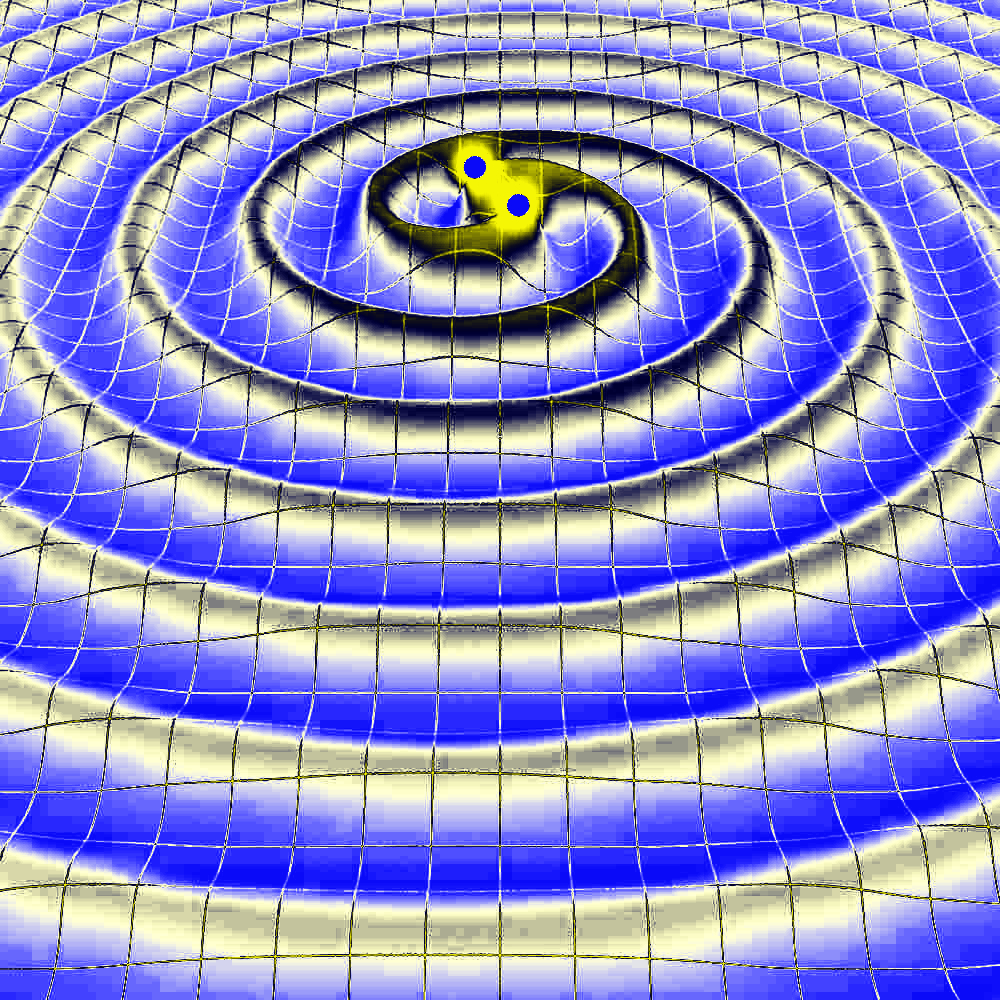Gravity waves change universal view
 Our understanding of the universe was fundamentally changed at a press conference in the US overnight.
Our understanding of the universe was fundamentally changed at a press conference in the US overnight.
“Ladies and gentlemen, we have detected gravitational waves,” said David Reitze, executive director of LIGO, the Laser Interferometer Gravitational-Wave Observatory.
The LIGO team has confirmed the existence of gravitational waves, the booming echoes of massive objects in the universe, first predicted by Albert Einstein.
Einstein theorised the existence of gravitational waves and said they would fit within his theory of general relativity, which describes the way that massive objects warp space-time around them.
When massive objects accelerate, they make ripples in the fabric of space-time (gravitational waves) that spread outward like the waves created in front or behind a boat.
While the presence of these waves was first inferred back in 1974 – until now they had never been observed directly.
The discovery is detailed in a paper published in Physical Review Letters.
The waves were detected emanating from one of the loudest (gravitational volume) sources imaginable - a pair of black holes, one 29 times the mass of the sun and the other 36 times, orbiting each other before merging into a single black hole.
LIGO’s recently-upgraded dual detector array – one in Hanford, Washington, and another in Livingston, Louisiana – picked up the tremors at almost the same instant in September 2015.
They registered space-time expanding and contracting by just a thousandth of the size of a proton. This mind-blowingly miniscule distance is still 10 times larger than the smallest unit LIGO can measure.
Even more amazing was that they were not officially looking at the time.
The experiment was not scheduled to begin taking data until four days later, so the detectors were in “engineering mode” to make sure everything was running smoothly when the history-making signal was received.
While this may seem like sheer luck, the research team says it appears that the merging of black holes actually happens more frequently than we suspected.
All objects that orbit each other produce disturbances in the form of gravitational waves. The two black holes were so ‘loud’ because they were losing energy to the waves, bringing them closer together, distorting space-time further and emitting even more gravitational waves.
The black holes spun faster and faster as they drew together, at the ending orbiting each other once every few milliseconds.
They eventually merged into a single black hole 62 times the mass of the Sun, which is three whole solar masses less than the two before they combined.
The missing mass had been converted into gravitational waves flitting out into space like ripples in a pond.
“It’s unbelievable,” said Caltech researcher Kip Thorne, one of LIGO’s founders.
“The total power output of gravitational waves during the brief collision was 50 times greater than all of the power put out by all the of the stars in the universe put together.”
The bigger black hole that emerged from the collision was initially lumpy instead of round, emitting even more gravitational waves before settling into a sphere and growing quiet.
The team converted the frequency of the gravitational waves into sound waves, meaning they could upload the ‘chirp’ of two black holes colliding onto Soundcloud.
The discovery means a great deal for both the past and the future.
It is historically important because gravitational waves were predicted by Einstein's general relativity, and the reality of them perfectly matches his equations almost 100 years ago.
The find should be the first of many, as gravitational waves begin to show us a side of the sky never seen before.
In fact, there was no previous sign of black holes in the size range just detected – much less two of them.
Researcher Avi Loeb of Harvard University is keen to keep looking.
“I used to say, as they are building the instrument, they can be thought of as a physics experiment,” he said.
“But as soon they detect a single source, they will be thought of as an astronomical observatory.”
For billions of years a sky full of gravitational waves have gone utterly undetected, but now from our vantage point near the edge of a small galaxy, we can tune in.







 Print
Print